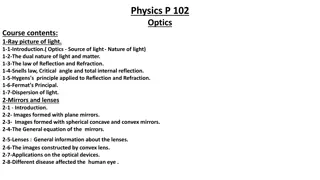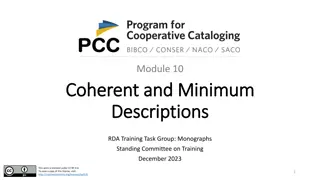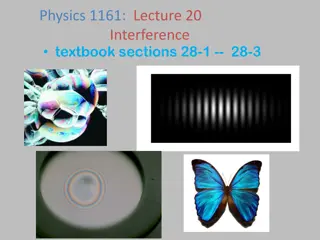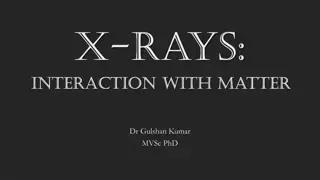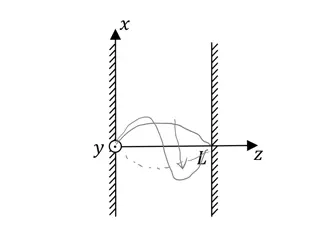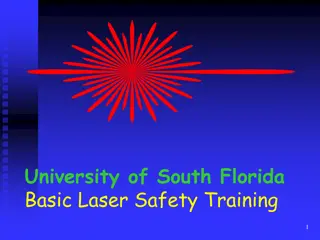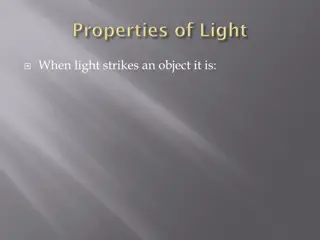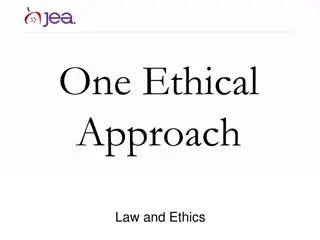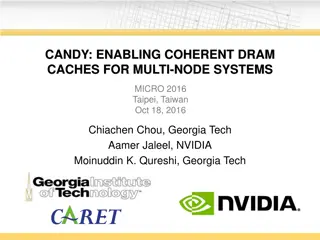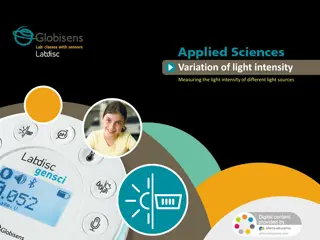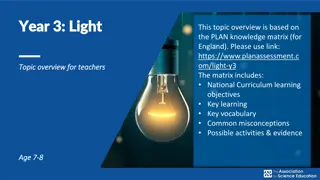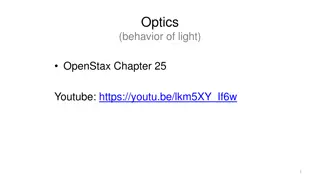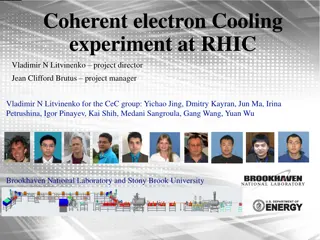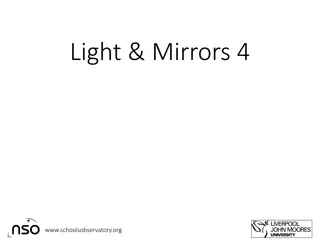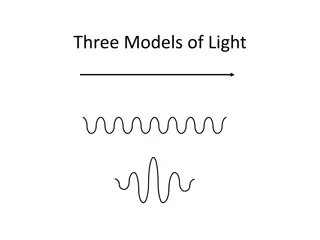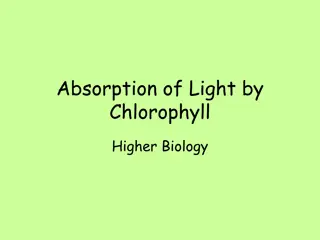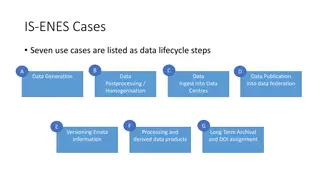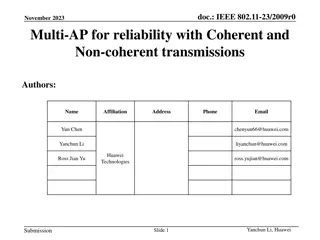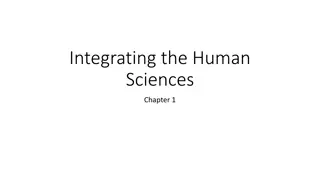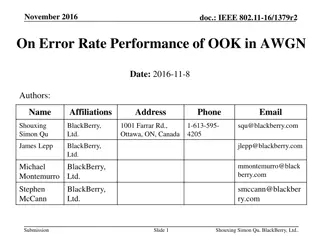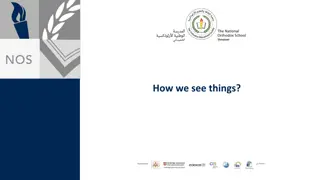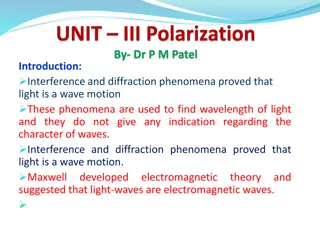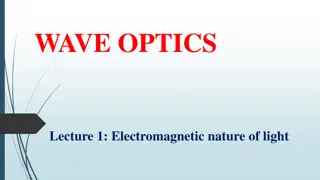Exploring Optics: Light Behavior and Properties
Optics studies the behavior of light, its interaction with matter, and the construction of instruments using or detecting light. From the dual nature of light to the laws of reflection and refraction, this branch of physics delves into topics like mirrors, lenses, and the dispersion of light. Practi
2 views • 15 slides
Understanding Coherent Descriptions of Information Resources
Explore the importance of coherent descriptions in categorizing information resources into work, expression, manifestation, and item aspects. Learn how a well-formed description should conform to basic guidance for effective resource organization and retrieval according to RDA standards.
5 views • 22 slides
Understanding Prism Terminology and Light Deviation
Prisms are optical devices that deviate light without changing its vergence. This module explores the various terminology associated with prisms, including Apex, Base, Refracting Angle, and Angle of Deviation. The passage of light through a prism follows Snell's Law, where the ray is deviated toward
4 views • 42 slides
Understanding Diffraction of Light: Types and Distinctions
The propagation of light according to the wave theory involves diffraction, where light waves exhibit bending around obstacles, causing a decrease in intensity. There are two main types of diffraction - Fresnel's and Fraunhofer's, each characterized by different conditions and behaviors. The distinc
1 views • 7 slides
Workers Compensation Solutions for Light Duty Job Assignments
Learn effective solutions for Workers Compensation Light Duty job assignments. This guide provides strategies to create and implement light-duty roles, helping injured employees return to work safely and efficiently. Understand essential benefits and best practices for managing light-duty assignment
9 views • 4 slides
Advanced Microbunched Electron Cooling for EIC Design Overview
Microbunched electron cooling is a cutting-edge technique proposed for the Electron-Ion Collider (EIC) design, aimed at enhancing beam properties through coherent electron interactions. The concept utilizes Coherent Electron Cooling (CeC) and broad-band amplification in the form of Micro-bunched Ele
1 views • 16 slides
Exploring Wave Interference in Physics: Superposition, Constructive, and Destructive Interference
Delve into the fascinating world of wave interference in physics, from understanding the concept of superposition to identifying constructive and destructive interference patterns. Discover how light waves interact through different paths and sources to create coherent or incoherent light. Explore t
1 views • 37 slides
Understanding X-rays: Interaction with Matter in Diagnostic Imaging
X-rays, being photons traveling at the speed of light, interact with matter in various ways such as Coherent Scatter, Compton Scatter, Photoelectric Effect/Absorption, Pair Production, and Photodisintegration. These interactions involve exciting atoms, ionization, and energy transfer, influencing th
0 views • 9 slides
Understanding Quantum Aspects of Electromagnetic Oscillations
Exploring the quantum nature of electromagnetic oscillations through concepts such as wave-particle duality, quantum harmonic oscillators, photon-number states, coherent light, and squeezed light. Delve into non-classical states, vacuum states, potential wells, and more in the fascinating world of q
1 views • 15 slides
Understanding Laser Fundamentals and Components
Laser technology operates on the principles of monochromatic, coherent, and directional light emission, making it distinct from ordinary light sources. This training covers the fundamental aspects of laser operation, contrasting it with incandescent light, and delves into the common components found
0 views • 31 slides
Understanding the Interaction of Light with Objects
When light strikes an object, it can be reflected, transmitted, or absorbed, depending on the material of the object. Transparent materials allow light to pass through, translucent materials scatter light, and opaque materials absorb and reflect light. The color of objects is the color they reflect,
6 views • 17 slides
Overview of Optical Fibre Technology and Applications
Optical fibre technology, spearheaded by Dr. Prabodh Sahai Saxena, revolutionizes communication systems through light transmission. This cutting-edge technology utilizes fibre optics made of glass or plastic to carry light signals, offering advantages like high bandwidth, low signal loss, and no ele
0 views • 20 slides
Evolution of Light Theory: From Wave Theory to Quantum Theory
At the turn of the century, the discovery of the photoelectric effect challenged the wave theory of light, leading to the development of the quantum theory by Max Planck and Albert Einstein. This new theory introduced the concept of discrete energy units known as quanta, bridging the gap between wav
1 views • 62 slides
Light Tracking Servo System Using Cadmium Sulfide Resistors
Introduction to an Arduino-based light tracking system using Cadmium Sulfide light-dependent resistors. The system tracks the maximum light intensity and automatically adjusts its direction towards the brightest source. It includes an Arduino-based Lux Meter and specifications such as DAC resolution
0 views • 7 slides
Ethical Approaches in Journalism: Red Light vs. Green Light Ethics
Explore the contrasting perspectives of Red Light and Green Light ethics in journalism, where Red Light focuses on caution and restraint while Green Light emphasizes action and opportunity. Dive into the nuances of ethical decision-making in journalism and consider the impact of language on ethical
0 views • 13 slides
Understanding Light Intensity Variation in Different Sources
Explore the correlation between light intensity and efficiency in various light sources through an intriguing experiment. Delve into the theoretical framework and practical applications to grasp the essence of light intensity and its distribution. Uncover the factors influencing the efficiency of li
0 views • 21 slides
Understanding Young's Double-Slit Experiment and Interference Patterns
Thomas Young's double-slit experiment in the late 1700s provided evidence of light behaving as a wave, showcasing interference patterns. This experiment challenged the particle theory of light and supported the wave theory. The interference patterns observed helped scientists grasp the wave nature o
0 views • 27 slides
Enhancing Multi-Node Systems with Coherent DRAM Caches
Exploring the integration of Coherent DRAM Caches in multi-node systems to improve memory performance. Discusses the benefits, challenges, and potential performance improvements compared to existing memory-side cache solutions.
0 views • 28 slides
Understanding Light Intensity: Measuring Different Light Sources
Explore the concept of light intensity by measuring various light sources and their efficiency. Through practical experiments, understand the relationship between light intensity and the output of different light sources. Theoretical frameworks, practical applications, and key concepts are discussed
0 views • 21 slides
Understanding Light: Basic Properties and Interactions
Explore the fundamental properties of light such as its speed compared to sound, the formation of shadows, and how we see things through reflection. Dive into types of light interactions like refraction and reflection, understanding how light behaves when passing through different mediums and intera
0 views • 27 slides
Understanding Light, Shadows, and Reflection in Science
Light is a vital form of energy that helps us see objects. Luminous objects emit light, while non-luminous objects do not. Understanding how light interacts with objects, creating shadows and reflections, is crucial in science. Transparent objects allow light to pass through, translucent objects all
0 views • 13 slides
Understanding Light: Key Concepts for Year 3 Students
Delve into the world of light with Year 3 students through engaging activities and explorations. Learn about sources of light, shadows, reflective surfaces, and the importance of light for vision. Discover how light helps us see and how shadows are formed, while exploring materials and objects that
0 views • 9 slides
Understanding the Behavior of Light in Optics
Light in optics can be described as a wave, a particle, or a ray. The ray model of light explains how light travels in straight lines unless it interacts with a surface or changes media. By tracing rays back, we can locate objects and understand how light interacts with matter at boundaries between
0 views • 39 slides
Coherent Electron Cooling Experiment at RHIC - Project Overview and Experimental Possibilities
Coherent electron cooling experiment at RHIC is led by Vladimir N. Litvinenko with Jean Clifford Brutus as the project manager. The CeC group, consisting of researchers from Brookhaven National Laboratory and Stony Brook University, aims to test various experimental scenarios, including high gain FE
0 views • 18 slides
Exploring Light and Mirrors: Investigations and Discoveries
Delve into the world of light and mirrors as we investigate angles of reflection, examine how mirrors affect the perception of objects, and explore the use of periscopes in observing underwater. Discover the rules governing the reflection of light beams and unravel the mysteries of how mirrors manip
0 views • 11 slides
Tradeoffs in Coherent Cache Hierarchies for Accelerators
Explore the design tradeoffs and implementation details of coherent cache hierarchies for accelerators in the context of specialized hardware. The presentation covers motivation, proposed design, evaluation methods, results, and conclusions, highlighting the need for accelerators and considerations
0 views • 22 slides
Understanding Light Emitting Diodes (LEDs)
Light Emitting Diodes (LEDs) are semiconductor devices that convert electrical energy into visible or invisible light. They are constructed using gallium, phosphorus, and arsenic materials instead of silicon or germanium. The recombination process in forward bias condition is crucial for the operati
0 views • 19 slides
Understanding Color: A Comprehensive Overview
Color is a fascinating aspect of our visual world, explored through the prism of science and light. This chapter delves into the origins of color perception, from Isaac Newton's study of the color spectrum to the reflection and transmission of light that determines how we see colors. Gain insights i
0 views • 28 slides
Understanding Sources of Light and Reflection
Exploring the concept of light sources and reflection, the article delves into how light is created by various objects like the sun, light bulbs, and fires. It explains the difference between sources of light and objects that reflect light, such as shiny metal surfaces. The reader is encouraged to i
0 views • 14 slides
Exploring Models of Light: Ray Model and Wave Model
This informative content delves into the Ray Model of Light, discussing how light travels in straight lines known as rays and how it can be made visible. It also explores the Wave Model of Light, covering topics like diffraction and the reasons why we often do not notice it. Additionally, the text t
0 views • 9 slides
Understanding Light Absorption by Chlorophyll in Biology
Explore how chlorophyll absorbs light in photosynthesis, the role of different types of seaweeds, and the use of spectrometers to measure light absorption. Discover the specific light regions absorbed by chlorophyll A and B, as well as adaptations in seaweeds for varying light intensities. Learn abo
0 views • 9 slides
Investigating the Role of Light in Photosynthesis
Explore the significance of light in photosynthesis through a structured scientific investigation involving plants, testing the necessity of factors like carbon dioxide, water, and light. Follow a hypothesis-driven approach to observe the production of oxygen in plants exposed to light versus dark c
0 views • 12 slides
Challenges in Developing a Coherent Provenance Architecture
In the IS-ENES Cases, challenges arise in establishing a formal model for provenance architecture across various data lifecycle steps. The need for a coherent approach is emphasized to manage provenance information artifacts effectively. These challenges demand the creation of a structured framework
0 views • 11 slides
Multi-AP for Reliable Wireless Transmission with Coherent and Non-coherent Technology
In this IEEE 802.11-23/2009r0 document, the concept of Multi-AP coordination is discussed to achieve Ultra High-reliability (UHR) goals. The use of both Coherent Joint Transmission (JT) and Non-coherent transmission technologies is explored for improved reliability and performance in wireless commun
0 views • 16 slides
Understanding Human Sciences: Integrating Disciplines for Coherent Insight
This book explores the integration of human sciences, aiming to create a coherent understanding of the key phenomena studied across humanities and social sciences. It advocates for a unified approach that embraces the complexity of relationships and causal links within this system, offering construc
0 views • 6 slides
Error Rate Performance of OOK Modulation in AWGN Channels
This document discusses the error rate performance of On-off keying (OOK) modulation in Additive White Gaussian Noise (AWGN) channels, covering both coherent and non-coherent detection methods. The theoretical results and evaluations of OOK modulation in AWGN are reviewed, providing insights into op
0 views • 17 slides
Understanding Light: How We See and Interact with Objects
Explore the fascinating world of light and vision, from how light travels in straight lines to how we perceive objects. Learn about luminous and nonluminous objects, the different categories of light sources, and the vocabulary associated with light interactions. Delve into the concepts of emitting,
0 views • 7 slides
Factors Affecting Algal Ecology: Light Intensity Impacts on Algae Growth and Composition
Light intensity plays a crucial role in the growth and composition of algae. Algae undergo photoadaptation processes to adjust to varying light levels, affecting their photosynthetic efficiency and cellular properties. High light intensity can lead to photoinhibition and changes in cellular composit
0 views • 19 slides
Understanding Light Wave Polarization and Brewster's Law
Interference and diffraction phenomena demonstrate light as wave motion, leading to insights on wave nature. Maxwell's electromagnetic theory supports light as transverse waves. Learn about polarization of light waves, production methods, and applications in industry. Explore the discovery of light
0 views • 89 slides
Understanding the Electromagnetic Nature of Light in Wave Optics
Exploring the electromagnetic properties of light, this lecture covers the dual nature of light as both a wave and particles, the quantized particle nature of light known as photons, and the manifestation of the electromagnetic nature of light through Maxwell's equations. It delves into wavefronts,
0 views • 8 slides
